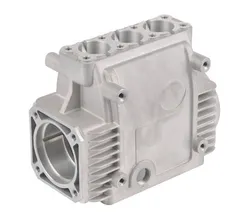What Are the Essential Parts of a Motorcycle Engine?
2024-12-23
Motorcycle engines are complex machines that power two-wheeled vehicles, allowing them to reach high speeds and navigate through various terrains. Whether you're a seasoned rider or a beginner looking to learn more, understanding the basic components of a motorcycle engine is crucial to keeping your bike running smoothly. In this blog, we will break down the essential parts that make up a motorcycle engine.
1. Cylinder and Pistons
The cylinder is the core of the motorcycle engine, where the combustion process happens. Within the cylinder, you'll find the piston, which moves up and down to create the force necessary to drive the bike forward. The piston is connected to the crankshaft, and its movement helps generate the power that propels the motorcycle.
2. Crankshaft
The crankshaft is an essential part of any internal combustion engine. It converts the linear motion of the pistons into rotational motion, which ultimately powers the wheels of the motorcycle. A well-maintained crankshaft ensures that your bike runs efficiently and smoothly.
3. Valves and Valve Train
The valves control the flow of air and fuel into the cylinder and the exhaust gases out. The valve train consists of the camshaft, lifters, push rods, and rocker arms. These components work in tandem to ensure the valves open and close at the right time during the engine's cycle.
4. Camshaft
The camshaft controls the timing of the valves. It is driven by the crankshaft and rotates to open and close the intake and exhaust valves at precise intervals. The camshaft plays a crucial role in engine performance, as the timing of valve movements can affect everything from fuel efficiency to power output.
5. Timing Chain or Belt
The timing chain or belt connects the crankshaft to the camshaft, ensuring they rotate in sync. This synchronization is vital to the engine's performance, as it helps maintain the correct timing for valve operation and combustion.
6. Fuel System
The fuel system delivers the necessary fuel to the engine for combustion. It includes components like the carburetor or fuel injectors, fuel tank, fuel lines, and fuel pump. The system ensures that the engine gets the right amount of fuel for efficient performance.
7. Ignition System
The ignition system is responsible for igniting the fuel-air mixture within the engine. This is typically done using spark plugs, which create a spark at the right time to ignite the fuel. The ignition system also includes the coil, CDI (Capacitor Discharge Ignition), and stator.
8. Cooling System
Motorcycle engines generate a significant amount of heat during operation. The cooling system, which includes radiators, coolant, and fans, helps regulate the engine's temperature to prevent overheating and maintain optimal performance.
9. Lubrication System
The lubrication system is responsible for reducing friction between moving parts in the engine. It includes the oil pump, oil filter, and oil passages, ensuring that the engine components are well-lubricated for smooth operation and longer lifespan.
Conclusion
Understanding these essential parts of a motorcycle engine is the first step in becoming more knowledgeable about how your bike works. Whether you're doing routine maintenance or troubleshooting an issue, knowing these components will help you make better decisions and take better care of your motorcycle.



